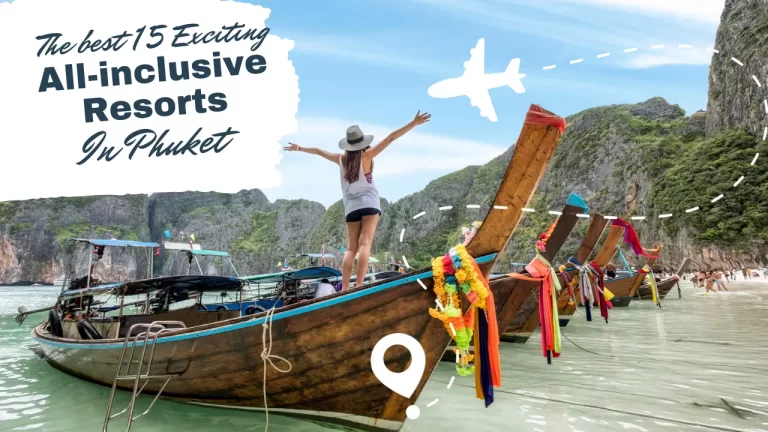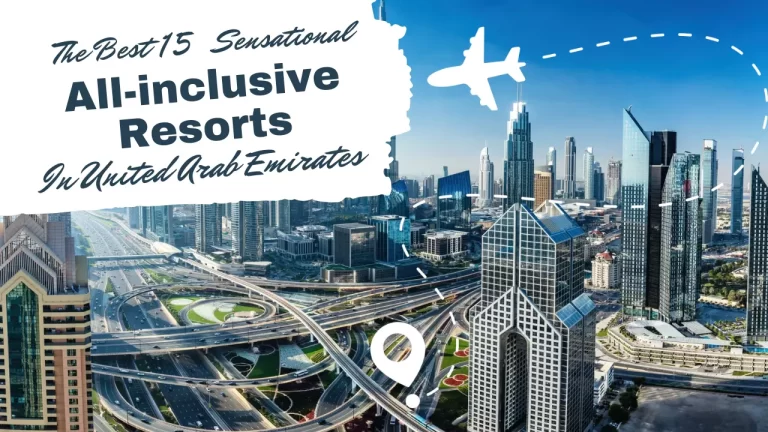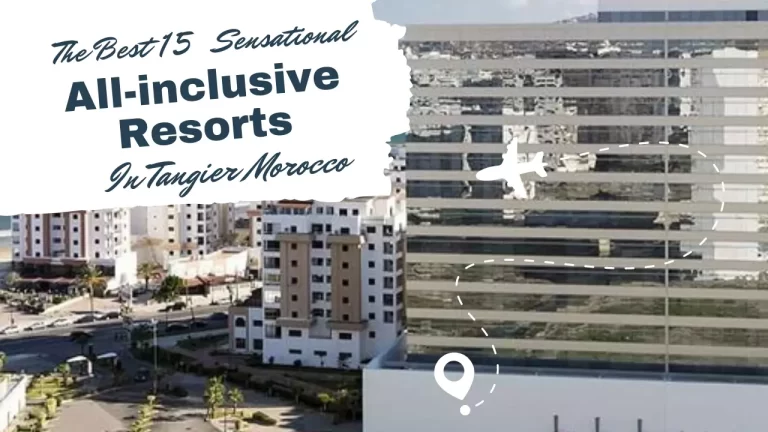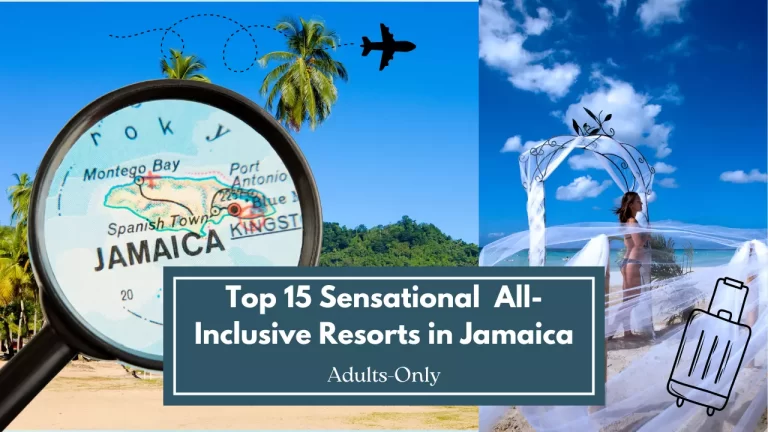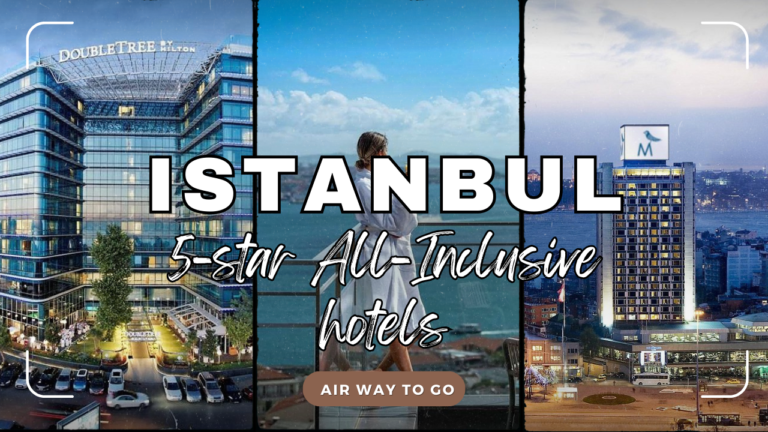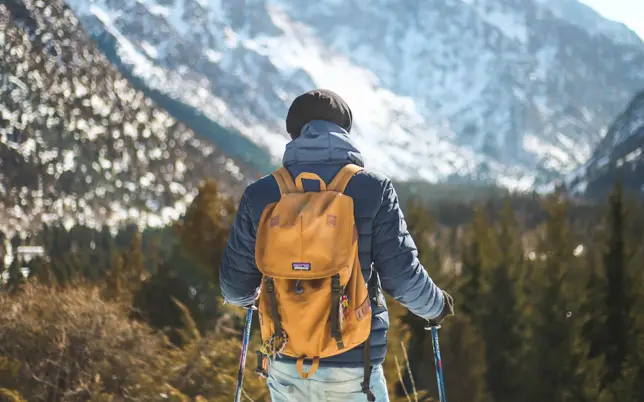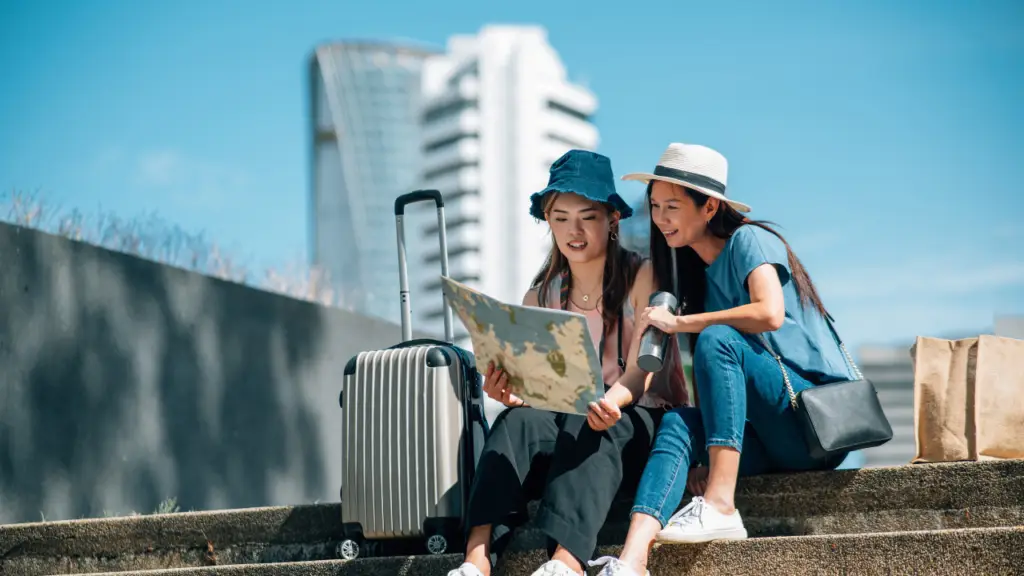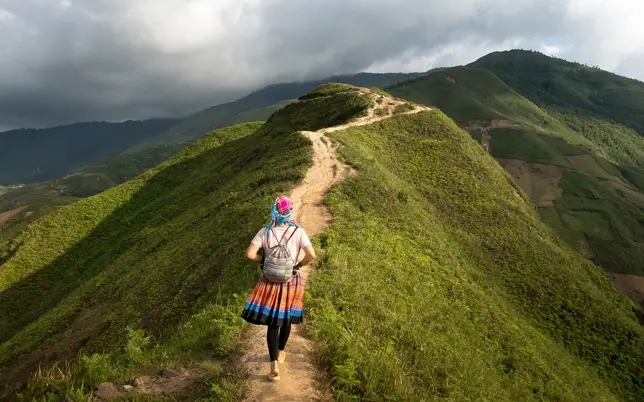
Are you ready to escape the hustle and bustle of everyday life and immerse yourself in nature’s wonders? If so, it’s time to discover the magic of walking holidays! In this comprehensive guide, we’ll explore the enchanting world of walking holidays, from selecting the perfect destination to packing essentials and embracing the trails. Whether you’re a seasoned hiker or a newcomer to outdoor adventures, join us as we embark on a journey of exploration, discovery, and exhilaration. Let’s take the first step towards unforgettable walking holiday experiences together!
Table of Contents
Benefits of Walking Holidays
Walking holidays offer a plethora of benefits for both body and mind. Engaging in walking activities amidst scenic landscapes provides a unique opportunity to rejuvenate, explore, and connect with nature. Let’s delve into some of the remarkable advantages of embarking on a walking holiday adventure.
Physical Health Benefits
- Cardiovascular Health: Walking is a low-impact aerobic exercise that strengthens the heart and improves circulation, reducing the risk of cardiovascular diseases.
- Weight Management: Regular walking during holidays helps burn calories, contributing to weight loss or maintenance when combined with a balanced diet.
- Strengthens Muscles and Joints: Walking uphill, downhill, or on varied terrain engages different muscle groups, enhancing overall strength and flexibility. It also supports joint health and mobility.
- Boosts Immunity: Spending time outdoors exposes the body to sunlight, promoting the production of vitamin D, which is essential for a robust immune system.
Mental Health Benefits
- Stress Reduction: Immersing oneself in natural surroundings during walking holidays can significantly reduce stress levels, promoting relaxation and a sense of tranquility.
- Enhances Mood: Physical activity triggers the release of endorphins, neurotransmitters that promote feelings of happiness and well-being, leading to an uplifted mood.
- Improves Cognitive Function: Walking stimulates blood flow to the brain, enhancing cognitive function, concentration, and creativity. It can also help alleviate symptoms of anxiety and depression.
- Promotes Mindfulness: Walking amidst scenic landscapes encourages mindfulness and appreciation of the present moment, fostering mental clarity and inner peace.
Connection with Nature
- Reconnects with the Environment: Walking holidays provide an opportunity to disconnect from the hustle and bustle of daily life and reconnect with the natural world, fostering a deeper appreciation for the environment.
- Encourages Exploration: Exploring picturesque trails, forests, and coastal paths allows walkers to discover hidden gems and marvel at the beauty of nature up close.
- Offers Therapeutic Benefits: The sights, sounds, and scents of nature have a therapeutic effect on the mind and body, promoting relaxation, stress relief, and overall well-being.
In conclusion, the benefits of walking holidays extend far beyond physical exercise. They offer a holistic experience that rejuvenates the body, uplifts the spirit, and nourishes the soul. Whether you’re seeking adventure, relaxation, or simply a break from the routine, embarking on a walking holiday is sure to leave you refreshed, invigorated, and inspired.
Choosing the Right Walking Holiday Destination
Selecting the perfect destination for your walking holiday is crucial to ensure an enjoyable and memorable experience. With countless options available worldwide, it’s essential to consider various factors to find the destination that best suits your preferences and fitness level.
Factors to Consider
- Terrain and Difficulty Level: Determine the type of terrain you prefer, whether it’s coastal paths, mountain trails, or forested landscapes. Consider the difficulty level of the trails, ranging from easy, moderate, to challenging, and choose according to your fitness level and hiking experience.
- Climate and Weather: Take into account the climate and weather conditions of your chosen destination, as they can significantly impact your walking experience. Consider the seasonality, temperature, and precipitation patterns to ensure optimal hiking conditions.
- Scenic Beauty: Evaluate the natural beauty and scenic attractions of potential destinations. Whether you’re drawn to breathtaking mountain vistas, serene coastal views, or lush forests, choose a destination that offers landscapes that resonate with your preferences.
- Cultural and Historical Significance: Explore destinations that offer cultural and historical attractions alongside scenic walking trails. Immerse yourself in local culture, traditions, and heritage sites, adding depth and richness to your walking holiday experience.
- Accessibility and Infrastructure: Consider the accessibility and infrastructure of your chosen destination, including transportation options, accommodation facilities, and trail amenities. Ensure that the destination is well-equipped to meet your needs and preferences during your walking holiday.
Popular Walking Holiday Destinations
- The Amalfi Coast, Italy: Known for its stunning coastal scenery, picturesque villages, and ancient pathways, the Amalfi Coast offers a perfect blend of natural beauty and cultural charm for walking holidays.
- The Swiss Alps, Switzerland: Renowned for its dramatic mountain landscapes, pristine lakes, and well-marked hiking trails, the Swiss Alps provide endless opportunities for hiking enthusiasts of all skill levels.
- The Lake District, England: With its tranquil lakes, rolling hills, and picturesque villages, the Lake District is a haven for walkers seeking scenic beauty and outdoor adventure in the heart of England’s countryside.
- New Zealand’s South Island: Home to diverse landscapes, including fjords, glaciers, and rugged coastline, New Zealand’s South Island offers an unparalleled outdoor playground for walkers and nature lovers alike.
- Patagonia, Argentina, and Chile: Explore the untamed wilderness of Patagonia, with its towering peaks, ancient forests, and vast expanses of pristine wilderness, making it an ideal destination for adventurous walkers.
In conclusion, choosing the right walking holiday destination is essential to ensure a fulfilling and rewarding experience. By considering factors such as terrain, climate, scenic beauty, cultural significance, and accessibility, you can find the perfect destination that matches your preferences and allows you to embark on a memorable walking adventure.
Essential Gear for Walking Holidays
Packing the right gear is essential for a successful and enjoyable walking holiday. Whether you’re embarking on a short day hike or a multi-day trek, having the proper equipment ensures comfort, safety, and convenience on the trails. Here’s a list of essential gear to consider packing for your walking holiday adventure:
Footwear
- Hiking Boots: Invest in a pair of sturdy, waterproof hiking boots with good ankle support and grippy soles to provide stability and traction on varied terrain.
- Socks: Choose moisture-wicking, cushioned hiking socks to keep your feet dry, comfortable, and blister-free during long walks.
Clothing
- Layered Clothing: Opt for moisture-wicking base layers, insulating mid-layers, and waterproof outer layers to regulate body temperature and protect against the elements.
- Hiking Pants/Shorts: Select lightweight, quick-drying pants or shorts with stretch fabric for freedom of movement and durability on the trails.
- Waterproof Jacket: Pack a breathable, waterproof jacket to shield yourself from rain, wind, and inclement weather conditions.
Backpacks and Accessories
- Daypack or Backpack: Choose a comfortable, properly fitted backpack with padded straps and multiple compartments to carry your essentials, including water, snacks, and extra layers.
- Water Bottle/Hydration System: Stay hydrated on the trails by bringing a refillable water bottle or hydration reservoir to quench your thirst during long walks.
- Map and Navigation Tools: Carry a detailed trail map, compass, or GPS device to navigate unfamiliar terrain and ensure you stay on course during your walking holiday.
Safety Essentials
- First Aid Kit: Pack a compact first aid kit with essentials such as bandages, antiseptic wipes, blister pads, and pain relievers to treat minor injuries or ailments on the go.
- Emergency Whistle: Carry a lightweight emergency whistle to attract attention and signal for help in case of an emergency or unexpected situation on the trails.
- Sun Protection: Don’t forget to pack sun protection essentials, including sunscreen, sunglasses, and a wide-brimmed hat, to shield yourself from harmful UV rays during sunny days.
Miscellaneous Gear
- Trekking Poles: Consider bringing trekking poles to reduce strain on your joints, improve stability on uneven terrain, and enhance overall balance and posture while walking.
- Snacks and Energy Food: Pack lightweight, high-energy snacks such as trail mix, energy bars, and dried fruits to refuel and maintain energy levels during long walks.
- Camera or Smartphone: Capture stunning landscapes and memorable moments along the way by bringing a camera or smartphone with a durable case to document your walking holiday adventure.
In conclusion, having the right gear is essential for a comfortable, safe, and enjoyable walking holiday experience. By packing essential items such as proper footwear, layered clothing, backpacks, safety essentials, and miscellaneous gear, you can embark on your walking adventure fully prepared and equipped to make the most of your time on the trails.
Planning Your Walking Holiday
Planning a walking holiday involves careful consideration of various factors to ensure a smooth and enjoyable experience on the trails. From setting a budget to creating an itinerary and booking accommodations, proper planning is essential to make the most of your walking adventure. Here’s a step-by-step guide to help you plan your walking holiday:
Setting a Budget
- Determine Your Budget: Start by establishing a budget for your walking holiday, taking into account expenses such as transportation, accommodation, meals, gear, and any additional activities or excursions.
- Research Costs: Research the costs associated with your chosen destination, including accommodation options, transportation expenses, park fees, and any guided tours or activities you plan to participate in during your walking holiday.
- Allocate Funds: Allocate funds accordingly to cover essential expenses while allowing for some flexibility for unexpected costs or optional extras that may arise during your trip.
Booking Accommodations
- Choose Accommodation Type: Decide on the type of accommodation that best suits your preferences and budget, whether it’s a cozy bed and breakfast, a budget-friendly hostel, a rustic cabin, or a luxurious hotel.
- Check Availability: Once you’ve narrowed down your options, check the availability of accommodations for your desired travel dates and book well in advance to secure your preferred lodging options, especially during peak seasons.
- Consider Location: Consider the location of your accommodations in relation to the hiking trails and attractions you plan to visit, ensuring convenient access to the trails and nearby amenities.
Creating an Itinerary
- Research Hiking Trails: Research the hiking trails and scenic routes available in your chosen destination, taking into account factors such as difficulty level, distance, elevation gain, and points of interest along the way.
- Plan Daily Activities: Create a daily itinerary outlining the hiking routes, sightseeing stops, and any other activities or excursions you wish to include during your walking holiday, allowing for flexibility to adapt to changing weather conditions or unexpected delays.
- Factor in Rest Days: Don’t forget to schedule rest days or leisurely activities to allow for relaxation, exploration of nearby attractions, or cultural experiences, balancing physical activity with downtime to recharge and rejuvenate.
Packing Essentials
- Refer to Gear Checklist: Refer to a comprehensive gear checklist to ensure you pack all the essential items for your walking holiday, including appropriate footwear, layered clothing, backpacks, safety gear, and miscellaneous items such as snacks, water, maps, and navigation tools.
- Pack Light: Pack light and only bring items that are necessary for your walking holiday, minimizing unnecessary weight and bulk in your backpack to enhance comfort and mobility on the trails.
- Double-Check Documents: Double-check important documents such as passports, travel insurance, permits, and reservation confirmations to ensure everything is in order before embarking on your walking holiday.
In conclusion, planning your walking holiday involves careful consideration of budget, accommodations, itinerary, and packing essentials to ensure a memorable and rewarding experience on the trails. By taking the time to plan ahead and prepare accordingly, you can embark on your walking adventure fully equipped and ready to make the most of your time in nature.
Safety Tips for Walking Holidays
While walking holidays offer a wonderful opportunity to explore nature and enjoy outdoor adventures, it’s essential to prioritize safety to ensure a safe and enjoyable experience on the trails. Here are some important safety tips to keep in mind during your walking holiday:
Proper Preparation
- Research Trails: Before embarking on your walking holiday, research the hiking trails and familiarize yourself with the terrain, difficulty level, trail conditions, and any potential hazards or challenges you may encounter along the way.
- Check Weather Forecast: Always check the weather forecast before heading out on the trails and be prepared for changing weather conditions by dressing appropriately and carrying essential gear such as waterproof clothing, extra layers, and sun protection.
- Share Itinerary: Inform someone you trust about your hiking plans, including your intended route, expected return time, and emergency contact information, especially if you’ll be hiking alone or in remote areas with limited cell phone reception.
Stay Safe on the Trails
- Stay on Marked Trails: Stick to marked hiking trails and avoid venturing off-trail to minimize the risk of getting lost or encountering dangerous terrain, especially in unfamiliar or remote areas.
- Buddy System: Whenever possible, hike with a companion or in a group to enhance safety and provide support in case of emergencies or unexpected situations on the trails.
- Stay Hydrated and Energized: Stay hydrated by drinking plenty of water and carry sufficient snacks or energy food to maintain energy levels during long walks, especially in hot or strenuous conditions.
Emergency Preparedness
- Carry Essentials: Pack a lightweight first aid kit, emergency supplies, and essential items such as a map, compass, GPS device, whistle, flashlight, multi-tool, and extra food and water to prepare for emergencies or unexpected situations on the trails.
- Know Emergency Procedures: Familiarize yourself with emergency procedures, including how to signal for help, administer first aid, and evacuate safely in case of injuries, accidents, or adverse weather conditions.
- Be Mindful of Wildlife: Respect wildlife and their natural habitat by observing from a safe distance and avoiding interactions that could potentially endanger yourself or the animals.
Listen to Your Body
- Know Your Limits: Know your physical abilities and limitations, and listen to your body’s cues to avoid overexertion, fatigue, or injury during your walking holiday. Take breaks as needed and pace yourself accordingly to ensure a comfortable and enjoyable hiking experience.
- Trust Your Instincts: Trust your instincts and intuition if you sense danger or feel uncomfortable in a particular situation, and be prepared to make informed decisions to prioritize your safety and well-being on the trails.
In conclusion, prioritizing safety is essential for a successful and enjoyable walking holiday adventure. By following these safety tips and practicing caution and preparedness, you can minimize risks and maximize the enjoyment of exploring nature and embarking on outdoor adventures during your walking holiday.
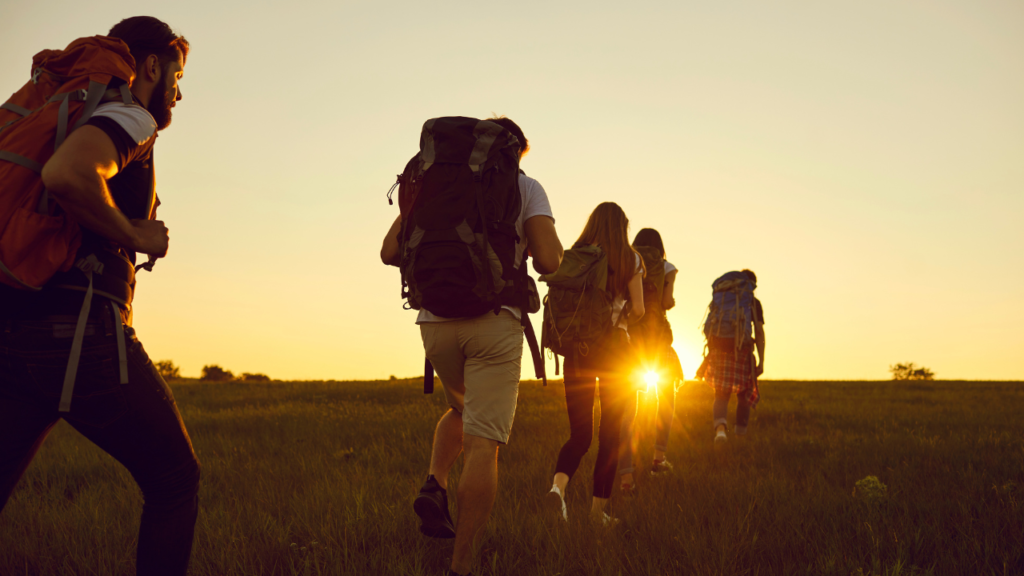
Types of Walking Holidays
Walking holidays offer diverse opportunities for outdoor enthusiasts to explore scenic landscapes, cultural attractions, and iconic trails around the world. Whether you prefer guided tours, self-guided adventures, or solo hiking expeditions, there’s a walking holiday option to suit every preference and experience level. Let’s explore some of the most common types of walking holidays:
Guided Tours
- Fully Guided Tours: Join a fully guided walking tour led by experienced local guides who provide expert knowledge, support, and assistance throughout the journey. Guided tours typically include accommodations, meals, transportation, and planned activities, allowing participants to relax and enjoy the hiking experience without worrying about logistics.
- Small Group Tours: Opt for a small group walking tour with a limited number of participants, offering a more personalized and intimate experience with like-minded travelers. Small group tours provide opportunities for social interaction, camaraderie, and shared experiences while exploring scenic trails and cultural landmarks.
Self-Guided Tours
- Self-Guided Walking Holidays: Embark on a self-guided walking holiday adventure, where you have the flexibility to explore at your own pace and follow pre-planned routes and detailed maps provided by tour operators. Self-guided tours allow for independent exploration, freedom of choice, and customization of itineraries to suit individual preferences and interests.
- Customizable Itineraries: Choose from a variety of self-guided walking holiday packages with customizable itineraries, allowing you to select your desired destinations, accommodation options, hiking routes, and additional activities based on your preferences and schedule.
Solo Hiking Trips
- Solo Hiking Expeditions: For independent adventurers seeking solitude, challenge, and self-discovery, solo hiking trips offer an opportunity to explore nature on your terms and forge a deeper connection with the wilderness. Solo hikers must be self-reliant, well-prepared, and knowledgeable about navigation, safety, and survival skills to ensure a safe and rewarding experience on the trails.
- Remote Wilderness Treks: Venture off the beaten path and embark on remote wilderness treks in pristine natural environments, where you can immerse yourself in untouched landscapes, rugged terrain, and serene solitude away from the crowds and tourist crowds.
Themed Walking Holidays
- Cultural Walking Tours: Immerse yourself in local culture, history, and traditions with themed walking holidays that combine scenic hiking routes with cultural experiences, visits to historical sites, guided tours of museums, and interactions with local communities.
- Gastronomic Walking Holidays: Indulge in culinary delights and gastronomic experiences with walking holidays that focus on food and wine tasting, visits to local markets, cooking classes, and gourmet dining experiences in picturesque settings.
In conclusion, the diverse array of walking holiday options cater to a wide range of preferences, interests, and experience levels, allowing outdoor enthusiasts to embark on memorable adventures and explore the world one step at a time. Whether you choose a guided tour, self-guided adventure, solo hiking trip, or themed walking holiday, there’s something for everyone to enjoy and discover amidst the beauty of nature and cultural heritage.
Best Practices for Responsible Travel
Responsible travel involves making conscious choices to minimize negative impacts on the environment, wildlife, and local communities while maximizing the benefits of tourism for all stakeholders involved. By practicing responsible travel habits, walkers can contribute to sustainable tourism practices and help preserve the natural and cultural heritage of destinations worldwide. Here are some best practices for responsible travel during walking holidays:
Respect Local Culture and Customs
- Cultural Sensitivity: Respect local customs, traditions, and cultural norms when visiting communities, religious sites, and cultural landmarks. Dress modestly, ask for permission before taking photos, and engage with locals in a respectful and mindful manner.
- Learn About Local Culture: Take the time to learn about the history, customs, and traditions of the places you visit, gaining a deeper understanding and appreciation for the local culture and heritage.
Minimize Environmental Impact
- Leave No Trace: Follow the principles of Leave No Trace by minimizing your environmental footprint, including packing out all trash, avoiding damage to vegetation, and staying on designated trails to protect fragile ecosystems and wildlife habitats.
- Reduce Waste: Bring reusable water bottles, food containers, and shopping bags to minimize single-use plastic waste and reduce pollution in natural environments.
Support Local Communities
- Buy Local: Support local businesses, artisans, and vendors by purchasing souvenirs, handicrafts, and locally-made products, contributing to the local economy and empowering communities to thrive sustainably.
- Responsible Tourism Operators: Choose responsible tour operators and accommodations that prioritize sustainability, community engagement, and environmental stewardship in their operations and practices.
Conserve Natural Resources
- Conserve Water and Energy: Practice water and energy conservation measures by taking shorter showers, turning off lights and electronics when not in use, and using eco-friendly transportation options whenever possible to reduce carbon emissions.
- Respect Wildlife: Observe wildlife from a safe distance, refrain from feeding or disturbing animals, and avoid participating in activities that exploit or harm wildlife for entertainment or profit.
Engage in Sustainable Practices
- Offset Carbon Footprint: Consider offsetting your carbon footprint by participating in carbon offset programs or donating to conservation initiatives that support reforestation, renewable energy, and other climate-friendly projects.
- Educate Yourself and Others: Educate yourself and others about the importance of responsible travel practices and encourage fellow travelers to adopt sustainable behaviors and make positive contributions to the places they visit.
In conclusion, responsible travel is about making informed choices and taking actions to minimize negative impacts on the environment, culture, and communities while promoting sustainable tourism practices and positive outcomes for all. By following these best practices for responsible travel during walking holidays, travelers can contribute to the preservation and protection of the world’s natural and cultural treasures for future generations to enjoy.
Personal Stories and Experiences
Personal stories and experiences from fellow walkers can provide valuable insights, inspiration, and motivation for planning and embarking on your own walking holiday adventure. Whether it’s overcoming challenges, discovering hidden gems, or forging unforgettable memories on the trails, these anecdotes offer a glimpse into the transformative power of walking holidays. Here are a few personal stories and experiences shared by walkers:
Overcoming Challenges
- Sarah’s Story: Sarah, an avid hiker, shares her experience of conquering her fear of heights while trekking along a narrow mountain ridge during a walking holiday in the Swiss Alps. Despite initial apprehension, she pushed past her comfort zone, embraced the breathtaking views, and felt a sense of exhilaration and accomplishment upon reaching the summit.
- Mark’s Adventure: Mark recounts his solo hiking expedition through the rugged terrain of Patagonia, where he navigated dense forests, crossed icy rivers, and braved unpredictable weather conditions. Despite facing logistical challenges and moments of doubt, he found solace and strength in the solitude of the wilderness, forging a deeper connection with nature and himself along the way.
Discovering Hidden Gems
- Emma’s Discovery: Emma shares her serendipitous discovery of a secluded waterfall hidden off the beaten path during a self-guided walking holiday in the Lake District. Venturing off-trail, she stumbled upon a picturesque oasis surrounded by lush greenery, crystal-clear waters, and cascading waterfalls, providing a tranquil escape from the crowds and a memorable highlight of her journey.
- James’ Encounter: James recounts his unexpected encounter with a family of grazing deer while hiking through a tranquil forest in New Zealand’s South Island. Captivated by the majestic beauty of the creatures and their natural habitat, he savored the fleeting moment of connection with wildlife, reaffirming his appreciation for the wonders of the natural world.
Forging Unforgettable Memories
- Lucy’s Reflection: Lucy reflects on the camaraderie, laughter, and shared experiences she shared with fellow travelers during a guided walking tour along the Amalfi Coast. Bonding over scenic hikes, delicious meals, and cultural excursions, she formed lasting friendships and cherished memories that would last a lifetime, proving that the journey is just as rewarding as the destination.
- David’s Transformation: David shares his transformative journey of self-discovery and personal growth during a solo hiking trip in the remote wilderness of Iceland. Immersed in the raw beauty and solitude of the landscape, he found solace, clarity, and renewed perspective, returning home with a newfound sense of purpose and gratitude for the transformative power of nature.
In conclusion, personal stories and experiences from fellow walkers offer a glimpse into the diverse and enriching experiences that await on walking holidays. Whether it’s overcoming challenges, discovering hidden gems, or forging unforgettable memories, these anecdotes inspire and remind us of the profound impact that walking adventures can have on our lives and spirits.
Packing List Checklist
Packing for a walking holiday requires careful consideration of essential items to ensure comfort, safety, and convenience on the trails. Whether you’re embarking on a short day hike or a multi-day trek, having the right gear and supplies is essential for a successful and enjoyable walking adventure. Here’s a comprehensive packing list checklist to help you prepare for your walking holiday:
Clothing
- Moisture-Wicking Base Layers: Pack lightweight, moisture-wicking base layers to help regulate body temperature and keep you dry and comfortable during physical activity.
- Insulating Mid-Layers: Bring insulating mid-layers such as fleece jackets or down vests to provide warmth in cooler temperatures or higher elevations.
- Waterproof Outer Layers: Include waterproof jackets and pants to protect against rain, wind, and inclement weather conditions.
- Quick-Drying Pants/Shorts: Choose quick-drying pants or shorts made of breathable and stretchy fabric for comfort and mobility on the trails.
- Hiking Socks: Pack moisture-wicking, cushioned hiking socks to prevent blisters and keep your feet dry and comfortable during long walks.
Footwear
- Sturdy Hiking Boots: Invest in sturdy, waterproof hiking boots with good ankle support and grippy soles to provide stability and traction on varied terrain.
- Comfortable Camp Shoes: Bring lightweight and comfortable camp shoes or sandals to wear around camp or during breaks from hiking.
Backpacks and Accessories
- Daypack or Backpack: Choose a properly fitted backpack with padded straps and multiple compartments to carry your essentials, including water, snacks, extra layers, and safety gear.
- Water Bottle/Hydration System: Stay hydrated on the trails by bringing a refillable water bottle or hydration reservoir to quench your thirst during long walks.
- Map and Navigation Tools: Carry a detailed trail map, compass, or GPS device to navigate unfamiliar terrain and ensure you stay on course during your walking holiday.
- Headlamp/Flashlight: Pack a lightweight headlamp or flashlight with extra batteries for visibility and safety during early morning or evening hikes.
Safety Essentials
- First Aid Kit: Bring a compact first aid kit with essentials such as bandages, antiseptic wipes, blister pads, pain relievers, and any necessary medications.
- Emergency Whistle: Carry a lightweight emergency whistle to attract attention and signal for help in case of emergencies or unexpected situations on the trails.
- Personal Locator Beacon (PLB): Consider carrying a personal locator beacon (PLB) or satellite messenger device for emergency communication and rescue assistance in remote areas.
Miscellaneous Gear
- Trekking Poles: Bring trekking poles to reduce strain on your joints, improve stability, and enhance balance and posture while walking.
- Sun Protection: Pack sunscreen, sunglasses, and a wide-brimmed hat to protect yourself from harmful UV rays and sunburn during sunny days on the trails.
- Insect Repellent: Include insect repellent to ward off mosquitoes, ticks, and other biting insects encountered during outdoor activities.
Personal Items
- Identification and Travel Documents: Carry a valid ID, passport, travel insurance documents, and any necessary permits or reservations for your walking holiday destination.
- Cash and Credit Cards: Bring sufficient cash and credit cards for expenses such as meals, accommodations, transportation, and souvenirs during your walking holiday.
- Personal Hygiene Items: Pack toiletries, hand sanitizer, and personal hygiene items such as toothbrush, toothpaste, and biodegradable soap for maintaining cleanliness and hygiene while traveling.
In conclusion, packing the right gear and supplies is essential for a successful and enjoyable walking holiday adventure. By following this comprehensive packing list checklist and ensuring you have all the necessary items for comfort, safety, and convenience on the trails, you can embark on your walking adventure fully prepared and equipped for the journey ahead.
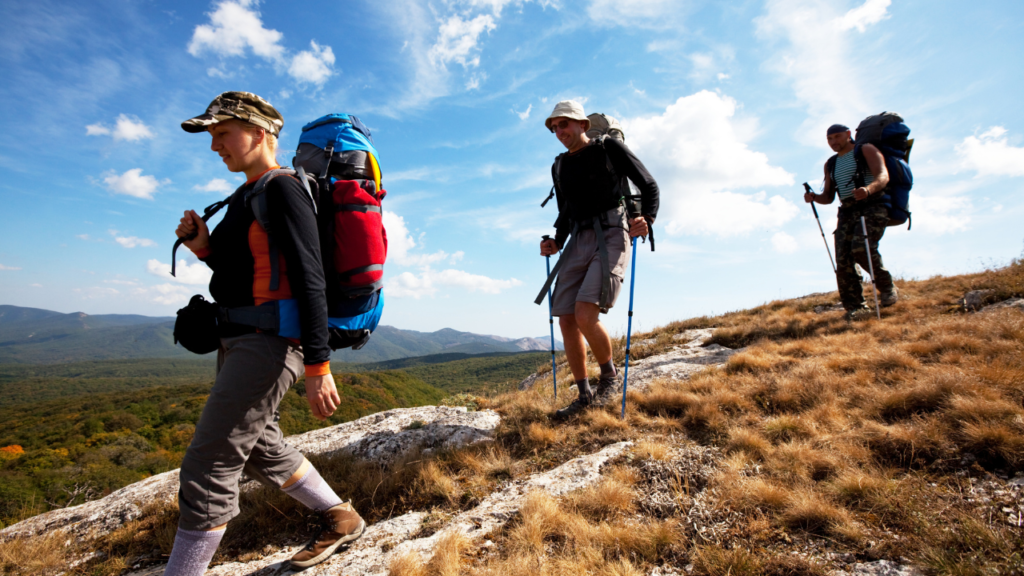
Budget-Friendly Walking Holiday Options
Embarking on a walking holiday doesn’t have to break the bank. With careful planning and consideration, there are plenty of budget-friendly options available for outdoor enthusiasts seeking to explore scenic trails and natural landscapes without overspending. Whether you’re looking for affordable accommodations, free activities, or budget-friendly destinations, here are some tips and options to help you enjoy a memorable walking holiday on a budget:
Choose Affordable Destinations
- National Parks and Nature Reserves: Explore national parks, nature reserves, and conservation areas that offer free or low-cost access to scenic hiking trails, stunning landscapes, and diverse wildlife habitats.
- Local Trails and Green Spaces: Take advantage of nearby walking trails, urban parks, and green spaces that offer opportunities for outdoor recreation and exploration close to home, without the need for expensive travel or accommodations.
Opt for Self-Guided Tours
- Self-Guided Walking Holidays: Consider booking self-guided walking holiday packages, which often offer more affordable rates compared to fully guided tours while providing the flexibility to explore at your own pace and customize your itinerary to suit your budget and preferences.
- DIY Itineraries: Plan your own self-guided walking holiday by researching hiking trails, accommodations, and activities in budget-friendly destinations and creating a DIY itinerary that fits within your budget constraints.
Accommodation Options
- Camping and Wilderness Backpacking: Camp in designated campgrounds or practice wilderness backpacking to enjoy affordable accommodation options surrounded by nature and scenic landscapes.
- Hostels and Guesthouses: Stay in budget-friendly hostels, guesthouses, or backpacker lodges that offer affordable accommodations with shared facilities, communal spaces, and opportunities to connect with fellow travelers.
Transportation Savings
- Public Transportation: Utilize public transportation, local buses, or ridesharing services to reach trailheads and explore nearby attractions, reducing transportation costs compared to renting a car or booking guided tours with private transportation.
- Walkable Destinations: Choose walkable destinations or compact cities with well-connected pedestrian-friendly infrastructure, allowing you to explore on foot and save money on transportation expenses.
Pack Light and Bring Essentials
- Pack Light: Pack light and bring only the essentials for your walking holiday, minimizing the need for excess luggage and additional baggage fees, especially if you’ll be traveling by air or public transportation.
- Essential Gear: Invest in essential gear and equipment such as sturdy hiking boots, weather-appropriate clothing, and safety essentials, prioritizing quality and durability to avoid frequent replacements and unnecessary expenses.
Seek Out Free Activities
- Free Guided Tours and Interpretive Programs: Take advantage of free guided tours, interpretive programs, and ranger-led activities offered by national parks, conservation organizations, and local tourism offices to learn about the natural and cultural heritage of your destination.
- Scenic Picnic Spots: Enjoy picnics and scenic meals at designated picnic areas, viewpoints, and lookout points along hiking trails and scenic routes, providing affordable dining options with breathtaking views.
In conclusion, a walking holiday can be an affordable and accessible option for outdoor enthusiasts looking to explore nature, stay active, and unwind amidst scenic landscapes without breaking the bank. By choosing budget-friendly destinations, accommodations, transportation options, and activities, you can enjoy a memorable walking holiday experience while staying within your financial means.
Frequently Asked Questions (FAQs)
Q: What is a walking holiday?
A: A walking holiday, also known as a hiking vacation or trekking trip, involves traveling to scenic destinations specifically for the purpose of walking and exploring outdoor trails, natural landscapes, and cultural attractions on foot.
Q: What are the benefits of a walking holiday?
A: Walking holidays offer numerous benefits, including opportunities for physical activity, outdoor recreation, stress relief, mental relaxation, connection with nature, exploration of scenic landscapes, cultural immersion, and personal growth.
Q: How do I choose the right walking holiday destination?
A: When choosing a walking holiday destination, consider factors such as terrain and difficulty level, climate and weather conditions, scenic beauty, cultural and historical significance, accessibility and infrastructure, as well as personal preferences and fitness level.
Q: What gear do I need for a walking holiday?
A: Essential gear for a walking holiday includes proper footwear such as hiking boots, layered clothing for varying weather conditions, backpack or daypack, water bottle or hydration system, map and navigation tools, safety essentials like first aid kit and emergency whistle, and miscellaneous items such as trekking poles, sunscreen, and snacks.
Q: How can I ensure safety during a walking holiday?
A: To ensure safety during a walking holiday, follow best practices such as researching trails and weather conditions, staying on marked trails, hiking with a companion or in a group, carrying essential safety gear, including first aid kit and emergency communication devices, and listening to your body’s cues and limitations.
Q: Are walking holidays suitable for beginners?
A: Yes, walking holidays are suitable for beginners, as many destinations offer trails of varying difficulty levels, including easy routes suitable for beginners and families with children. It’s essential to choose trails that match your fitness level and hiking experience.
Q: How can I make my walking holiday more eco-friendly?
A: To make your walking holiday more eco-friendly, practice responsible travel habits such as minimizing environmental impact by following Leave No Trace principles, supporting local communities and businesses, conserving natural resources, reducing waste, and respecting wildlife and natural habitats.
Q: What is the difference between guided and self-guided walking holidays?
A: Guided walking holidays are led by experienced local guides who provide expert knowledge, support, and assistance throughout the journey, while self-guided walking holidays offer more flexibility for independent exploration with pre-planned routes and detailed maps provided by tour operators.
Q: How can I plan a walking holiday on a budget?
A: To plan a walking holiday on a budget, consider options such as choosing affordable destinations, accommodations, and transportation, opting for self-guided tours, packing light and bringing essential gear, seeking out free activities, and making use of public transportation and local amenities.
Q: What are some recommended walking holiday destinations?
A: Recommended walking holiday destinations include scenic locations such as national parks, nature reserves, coastal paths, mountain trails, and cultural heritage sites around the world, offering diverse opportunities for outdoor exploration and adventure.
Conclusion
Embarking on a walking holiday is not just about exploring scenic trails and breathtaking landscapes; it’s also a journey of self-discovery, adventure, and connection with nature. Whether you’re seeking relaxation, physical activity, cultural immersion, or simply a change of scenery, a walking holiday offers something for everyone to enjoy and appreciate.
From the serene beauty of national parks to the rugged terrain of mountain ranges and the cultural richness of historic trails, there’s a vast array of destinations and experiences waiting to be discovered on foot. Whether you’re a seasoned hiker looking for a new challenge or a beginner seeking to explore nature at a leisurely pace, walking holidays provide opportunities for exploration, adventure, and personal growth.
By following the tips, advice, and recommendations outlined in this guide, you can plan and prepare for your walking holiday with confidence and excitement. Remember to pack the essentials, prioritize safety, respect the environment and local communities, and embrace the journey with an open mind and adventurous spirit.
Whether you’re trekking through alpine meadows, strolling along coastal cliffs, or wandering through ancient forests, the experiences and memories gained from a walking holiday will stay with you long after the journey ends. So lace up your hiking boots, grab your backpack, and embark on a walking adventure to explore the world one step at a time.
Happy trails!
